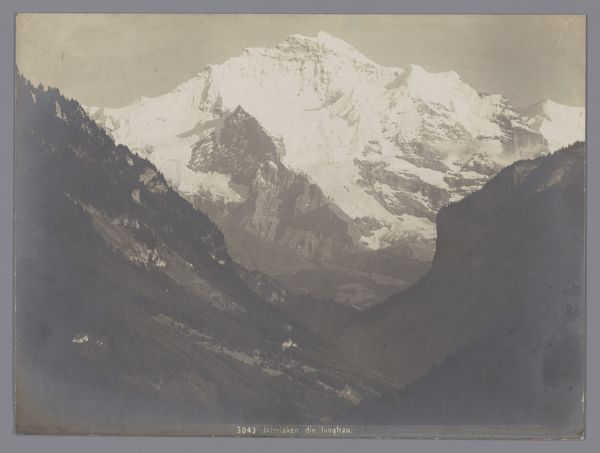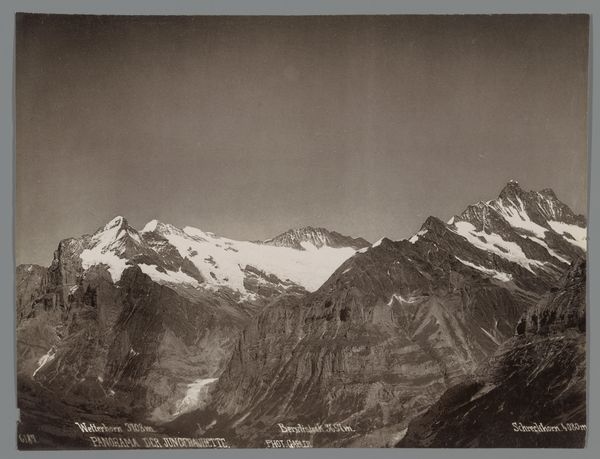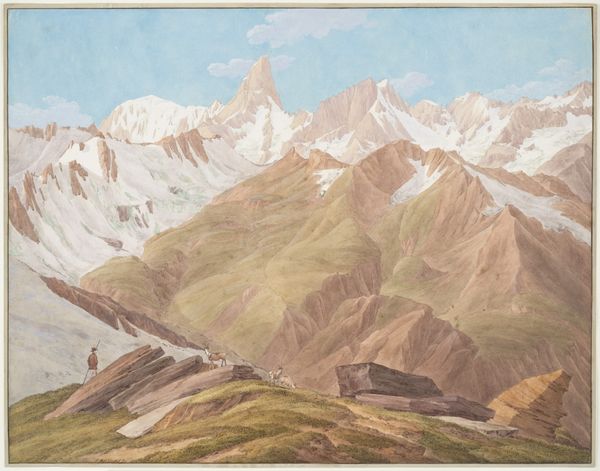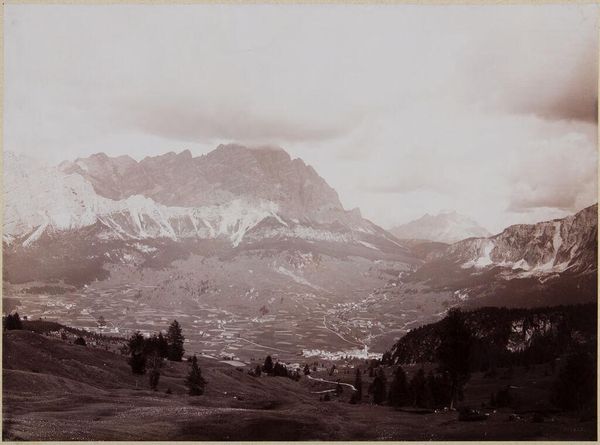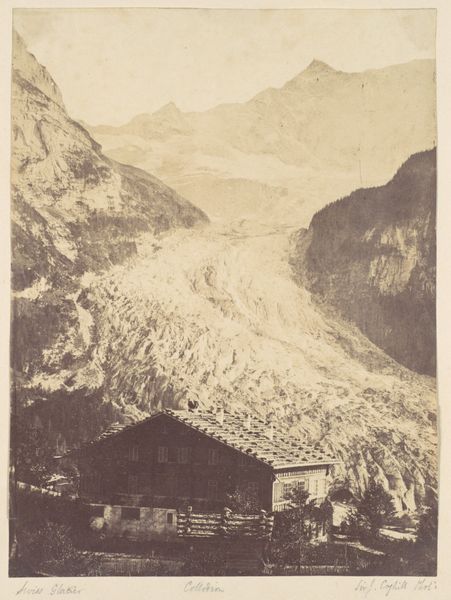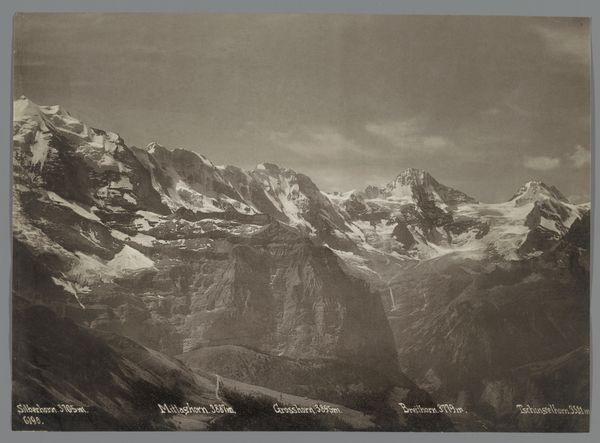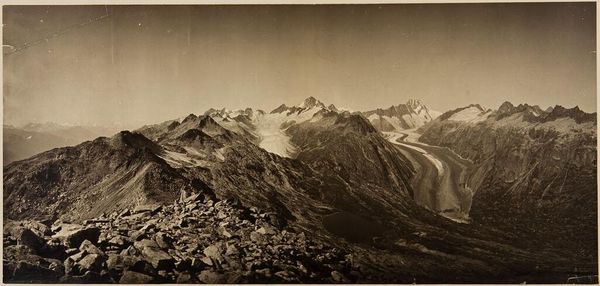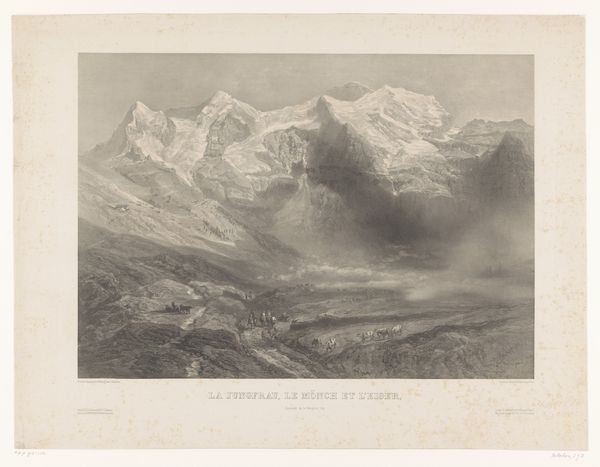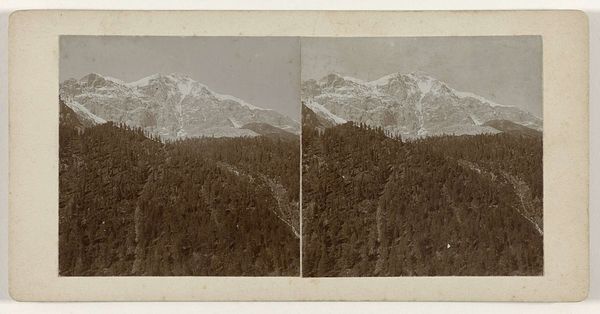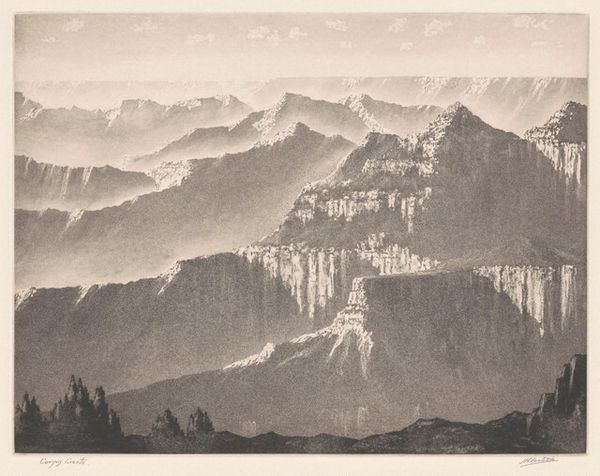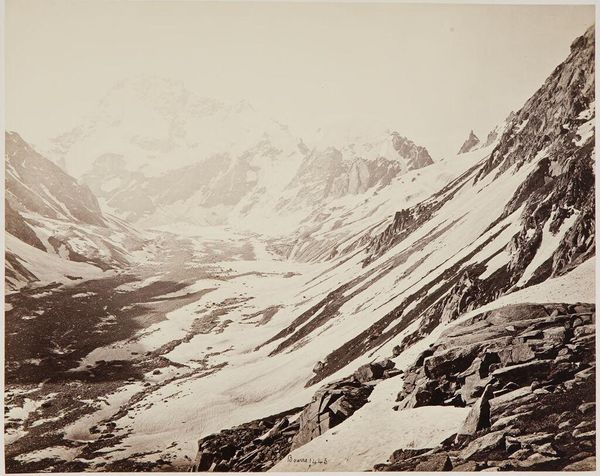
Dimensions: height 164 mm, width 224 mm
Copyright: Rijks Museum: Open Domain
Curator: This is "View of the Alps from Pilatus in Switzerland", a photochrom print made around 1896-1897 by Photochrom Zurich. It’s part of the Rijksmuseum collection. Editor: Wow, what a stunning vista. It evokes a sort of tranquil melancholy, a beautiful dreamscape caught between earth and sky. All those layers of mountains, fading into the distance... It feels like the visual equivalent of a long, deep breath. Curator: Precisely. Photochromy, as a process, is fascinating. It allowed for the creation of colorized prints from black and white negatives long before true color photography was widely available. Think of its potential for widespread circulation of landscapes and architecture as a colonial apparatus of tourism, a means to access territories and reinforce power dynamics, essentially, as a precursor to modern-day digital tourism! Editor: That's a heavier take than my whimsical clouds! Still, I see what you mean. There’s something about the softened tones, the almost painterly quality, that hints at idealization, you know? Like these aren't just mountains, they're symbols—of freedom, maybe, or of the sublime, certainly of the kind sought in romantic painting? It also occurs to me, the framing of photography flattens things that are physically deep and expansive...so the translation, here, reinforces artifice even as it purports to capture the “real”. Curator: Exactly! And that brings up crucial questions: Whose gaze is privileged? How are these landscapes implicated in narratives of national identity and expansionism? By studying such visuals, we decode ideologies deeply rooted in societal structures of that era. Editor: I hadn't considered that...but it does give one pause. My dreamy mountain tops are getting a little dark! Although it still captures my eye and feels very transporting; even knowing there is manipulation or messaging, its hard not to be swept up. What’s interesting too, for me as an artist, is thinking about what these kinds of images mean for contemporary creative practices— how do you represent "nature" responsibly after all this time? Curator: A pivotal question indeed. Ultimately, critically reflecting upon visual representations from the past, like this beautiful mountain view, allows us to confront current environmental issues more consciously and more accountably. Editor: Well, even with its historical baggage, I still find the print really captivating! And its nice to have a deeper perspective. I will never look at vintage tourism images the same again.
Comments
No comments
Be the first to comment and join the conversation on the ultimate creative platform.
